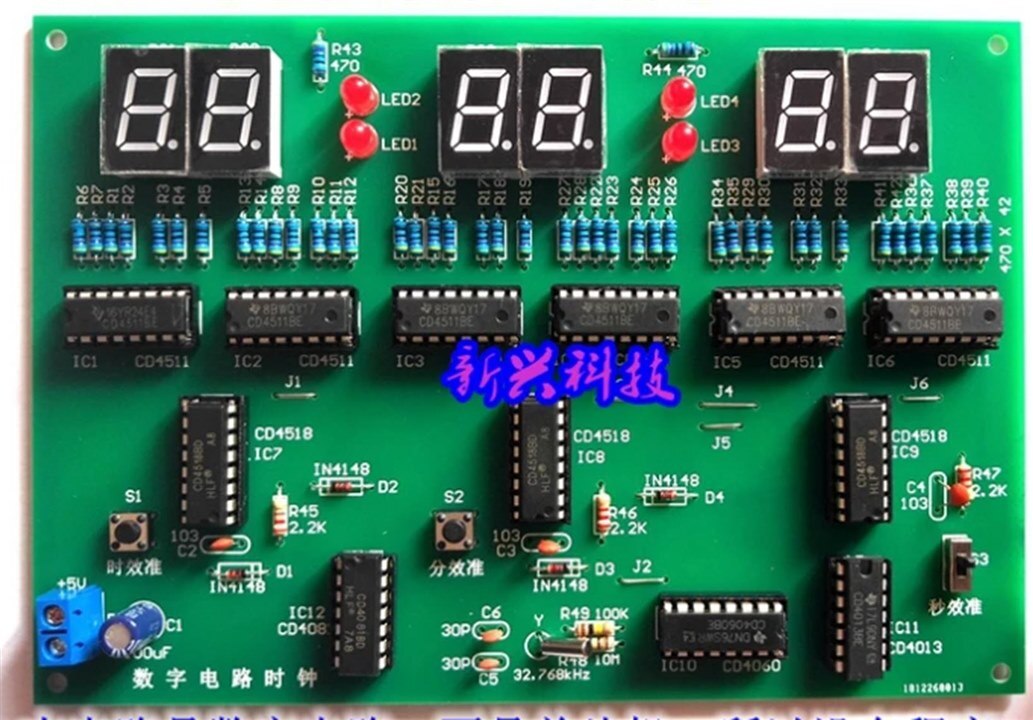What Components use to make digital clock?
Be sure to click 'more' and select 'suggest as answer'!
If you're the thread creator, be sure to click 'more' then 'Verify as Answer'!
Funnily enough, I had success answering a question similar to this, from an 8-year old.
It was answered over several weekends.
The kid was already familiar with lighting an LED with a battery and resistor, that was the only pre-requisite.
The first step was to teach him binary. The 8-year old took to it well, and I would quiz him whenever I saw him to convert a random number from binary to decimal or vice-versa.
Initially he needed a pen and paper, but it didn't take long before he could do it mentally. The _reason_ for learning binary was easy - it was considered an extension of using an LED to send signals (like Morse code), and instead using many LEDs to send a bigger code.
The next step we did was to use a clock trainer board and a multimeter.
 (Image source: aliexpress)
(Image source: aliexpress)
We inspected it from the center-outward. We used a multimeter on one of the center row of chips, and saw that each hour or minutes digit corresponded to the binary value that was on the chip (using google to see the chip pinout). That was easy to do by simply writing each voltage on paper, because the hours or minutes do not change quickly. We could also see the pulses on the chip corresponding to the seconds.
Then we tried to figure out what the chips on top do, and googled for that too. It didn't take long to figure out it was doing a conversion from 4 binary signals to 7 segments.
Some of the rest of the understanding of the lower components was theoretical, but it was easy to show why the metal can's crystal had to oscillate 32768 times per second.
The 8-year old now broadly knows how a clock works and what parts are needed.
Funnily enough, I had success answering a question similar to this, from an 8-year old.
It was answered over several weekends.
The kid was already familiar with lighting an LED with a battery and resistor, that was the only pre-requisite.
The first step was to teach him binary. The 8-year old took to it well, and I would quiz him whenever I saw him to convert a random number from binary to decimal or vice-versa.
Initially he needed a pen and paper, but it didn't take long before he could do it mentally. The _reason_ for learning binary was easy - it was considered an extension of using an LED to send signals (like Morse code), and instead using many LEDs to send a bigger code.
The next step we did was to use a clock trainer board and a multimeter.
 (Image source: aliexpress)
(Image source: aliexpress)
We inspected it from the center-outward. We used a multimeter on one of the center row of chips, and saw that each hour or minutes digit corresponded to the binary value that was on the chip (using google to see the chip pinout). That was easy to do by simply writing each voltage on paper, because the hours or minutes do not change quickly. We could also see the pulses on the chip corresponding to the seconds.
Then we tried to figure out what the chips on top do, and googled for that too. It didn't take long to figure out it was doing a conversion from 4 binary signals to 7 segments.
Some of the rest of the understanding of the lower components was theoretical, but it was easy to show why the metal can's crystal had to oscillate 32768 times per second.
The 8-year old now broadly knows how a clock works and what parts are needed.